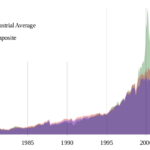Moms have new opportunities with remote work, yet they are still on the hook for most family responsibilities
- More women than ever have entered the American workforce
- Remote work opportunities have allowed moms to enter or rejoin the workforce
- Many women feel like they are working two full-time jobs: managing their households and their careers
- Women still take on more child-raising responsibilities than men
- The share of prime-age women in the labor force has risen since before the pandemic
- The pandemic’s remote work policies have had a lasting impact on women in the workforce
- Rising costs make it harder for families to live on one paycheck
- Women in the U.S. labor market make 17% less than men
- The U.S. lags behind other countries in terms of women’s employment
- More work-from-home opportunities have increased the labor force participation of people with disabilities
More women than ever have entered the American workforce, thanks to the demand for employees, remote work opportunities, and a surge in female entrepreneurs. However, while remote work has allowed many moms to enter or rejoin the workforce, it has also burdened them with additional responsibilities. Many women feel like they are working two full-time jobs: managing their households and their careers. The gender divide in child-raising responsibilities is exacerbated by remote work, as women often take on more childcare due to their flexible jobs. The share of prime-age women in the labor force has risen since before the pandemic, driven by strong demand for workers. However, women still face challenges in the labor market, including lower wages compared to men and a smaller proportion of women in the workforce compared to men. The U.S. also lags behind other countries in terms of women’s employment, partly due to the lack of public spending on family support. On the positive side, more work-from-home opportunities have increased the labor force participation of people with disabilities, especially women.·
Factuality Level: 3
Factuality Justification: The article provides a detailed and factual overview of the increasing number of women entering the American workforce, the challenges they face, and the impact of remote work and caregiving responsibilities. The information is well-researched and supported by data and expert opinions. However, the article contains some tangential details and personal anecdotes that may distract from the main topic.·
Noise Level: 3
Noise Justification: The article provides a detailed analysis of the increasing number of women entering the American workforce, the challenges they face, and the impact of remote work and entrepreneurship. It discusses the gender divide, the impact of the pandemic, and the economic implications. The article includes personal stories and expert opinions to support its claims.·
Private Companies: BookSmarts
Key People: Sarika Paralkar (Tech Professional), Vidyut Naware (Husband of Sarika Paralkar), Claudia Olivetti (Economics Professor at Dartmouth College), Misty Heggeness (Economist at the University of Kansas), Stefania Albanesi (Economist at the University of Miami), Camille Daigle (Grandmother), Carmen Haslam (Customer Service Representative), Nick Haslam (Husband of Carmen Haslam), Laura Gee (Economist), Olga Stoddard (Economist), Kristy Buzard (Economist), Vanessa Cameron (Nurse), Tony (Brewer), Amber Messina (Accountant), David (Husband of Amber Messina)
Financial Relevance: No
Financial Markets Impacted: No
Financial Rating Justification: This article discusses the increase in women entering the American workforce and the challenges they face in balancing work and family responsibilities. While it provides insights into the labor market and gender dynamics, it does not directly pertain to financial topics or events that impact financial markets or companies.·
Presence Of Extreme Event: No
Nature Of Extreme Event: No
Impact Rating Of The Extreme Event: No
Extreme Rating Justification: ·
 www.wsj.com
www.wsj.com 





